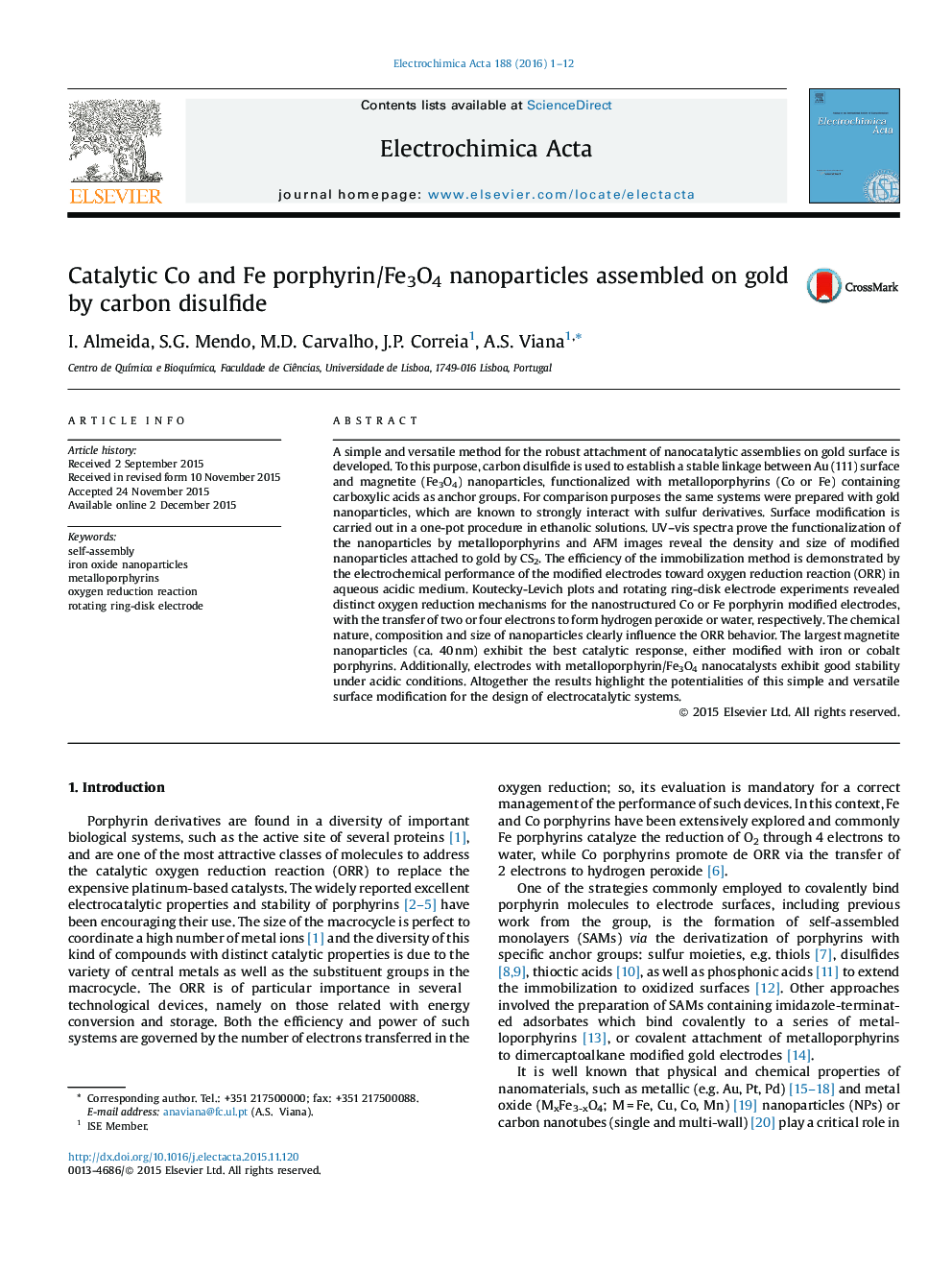| Article ID | Journal | Published Year | Pages | File Type |
|---|---|---|---|---|
| 183325 | Electrochimica Acta | 2016 | 12 Pages |
A simple and versatile method for the robust attachment of nanocatalytic assemblies on gold surface is developed. To this purpose, carbon disulfide is used to establish a stable linkage between Au (111) surface and magnetite (Fe3O4) nanoparticles, functionalized with metalloporphyrins (Co or Fe) containing carboxylic acids as anchor groups. For comparison purposes the same systems were prepared with gold nanoparticles, which are known to strongly interact with sulfur derivatives. Surface modification is carried out in a one-pot procedure in ethanolic solutions. UV–vis spectra prove the functionalization of the nanoparticles by metalloporphyrins and AFM images reveal the density and size of modified nanoparticles attached to gold by CS2. The efficiency of the immobilization method is demonstrated by the electrochemical performance of the modified electrodes toward oxygen reduction reaction (ORR) in aqueous acidic medium. Koutecky-Levich plots and rotating ring-disk electrode experiments revealed distinct oxygen reduction mechanisms for the nanostructured Co or Fe porphyrin modified electrodes, with the transfer of two or four electrons to form hydrogen peroxide or water, respectively. The chemical nature, composition and size of nanoparticles clearly influence the ORR behavior. The largest magnetite nanoparticles (ca. 40 nm) exhibit the best catalytic response, either modified with iron or cobalt porphyrins. Additionally, electrodes with metalloporphyrin/Fe3O4 nanocatalysts exhibit good stability under acidic conditions. Altogether the results highlight the potentialities of this simple and versatile surface modification for the design of electrocatalytic systems.
